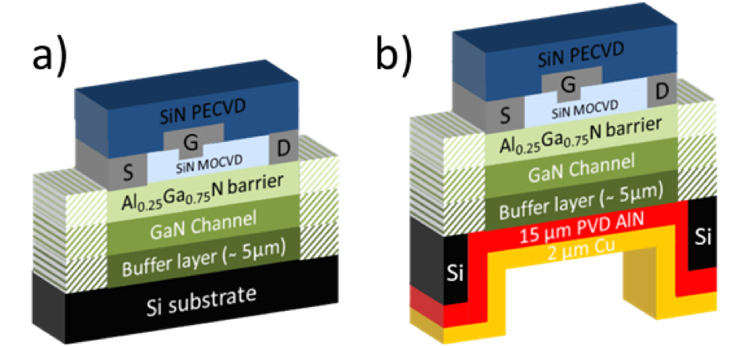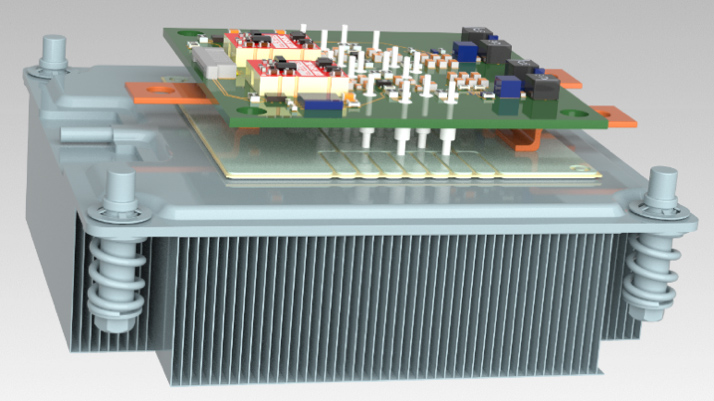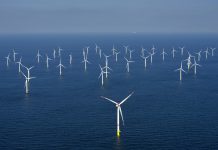Here, Gaudenzio Meneghesso, discusses how to innovate and move towards a more efficient use of green energy
Gains from green energy production are lost if power distribution and use is wasteful. The GaN-based devices developed within our project “Innovative Reliable Nitride based Power Devices and Applications (InRel-NPower)” will be able to operate at high temperatures, frequencies and voltages all helping to eliminate up to 90% of the power losses in electricity conversion compared to the current technology. ‘Energy not only needs to be produced in an environmentally-friendly manner, but it should also be distributed and used efficiently,’ says Meneghesso, and for him the future is bright: ‘I see even more research activities in the near future on the development of technologies that will create more efficient systems to address the great challenge of energy saving.’
Electrical energy
The reliance of the world on electrical energy is already huge and will only get bigger. Currently, up to 40% of the world’s energy use comes in the form of electrical power and is expected to reach 60% in the coming decades. While a large segment of scientific research is focused on producing cleaner and renewable electrical energy, a second segment of equally important energy research is simultaneously working to address the problems of electrical waste and efficiency. Reducing the overall amount of electrical energy needed to serve our current and future demands would be a key pillar of any energy strategy moving forward. Increasing efficiency of our electrical infrastructure frees up more energy to be used by consumers and relieves pressure on the power stations needed to produce it in the first place. Right now, one of the biggest ways we can reduce the demand of electrical energy, is first of all “don’t waste it”.

There is a significant amount of energy lost to waste whenever electricity is converted, which occurs daily. Electrical conversions are required for a variety of appliances, often going from 230V mains to 12V DC, or within machines like electric cars where the DC voltage produced by the battery must be converted to AC for the motor drive. The devices at the heart of these conversions are transistors. Unfortunately, the current silicon-based devices that have been used for around 50 years are reaching their limits in terms of power conversion and this is resulting in wasted energy in the form of heat and higher consumption. To combat this problem, devices based on materials other than silicon (GaN, SiC, AlN, … ) are being developed and these new transistors have the potential to be significantly smaller and more efficient.
Gaudenzio Meneghesso, Professor in the Department of Information Engineering at the University of Padova, Italy, and the coordinator of the InRel-NPower project, has been working for 30 years in the field of semiconductors device reliability. “I start working on the gallium nitride (GaN) based High Electron Mobility Transistor devices in 2000” he says. “Together with my research group, we saw a great opportunity to become a worldwide reference group on the characterisation and reliability investigation of these devices. Power electronics that use WBG semiconductors have the potential to be smaller, perform better, to be more efficient and to cost less” explains Prof. Meneghesso, “Meeting such energy saving targets is an important challenge for most industrialised nations and work on this technology has been going on for a while, however, a few hurdles remain”.

All power electronic systems of the future will take full advantage of the GaN-based and Al-based devices developed within this project.
These advantages include:
- Increased energy saving
- Reduced heat sink requirements, lowering cooling requirements;
- 80% reduction in system volume and weight, lowering overall system cost and material usage (due to the much smaller inductors, transformers and capacitors);
- Lower voltage drop for unipolar devices, lowering conduction losses and saving energy;
- Increased output power, leading to more efficient power systems;
- Improved transient characteristics and switching speed, reducing switching losses;
- Reduced electrical noise from smaller system packages, allowing more robust circuits.
The main strategic target of this project is to offer reliable and robust devices processed on GaN-based and AlN-based substrates (available within Europe for high and medium power application). Compared to the start of the project, good progress was made towards the optimisation of low sheet resistance barrier materials. Both selected barrier materials, AlN and InAlN, reach the target (< 300 Ohm/sq.).
First demonstration of GaN-on-silicon HEMT technology with ultra-low leakage (< 1 µA/mm) up to 3000 volts has been achieved by using a local substrate removal (see Fig. 1) and AlN ultra-wide bandgap backside deposition. This result represents a substantial progress beyond the state of the art.
Packaging
Packaging is also carefully addressed in this project thanks to two innovative packaging solutions that will allow the exploitation of the full capability of the GaN material. Novel high voltage GaN bare dies will be integrated into packages with high-performance Active Metal Brazed (AMB) ceramics and thereon built planar interconnect technologies for better cooling and lower inductance. Only such flat 3D-stacks enable the new level of functional density, power density and efficiency in power electronics.
Demonstrators will also be developed to prove the better capabilities of GaN-based power electronics (see Fig. 2). Finally, with reliability testing and a detailed failure analysis new knowledge on the novel GaN devices will be developed to be considered in designing new robust and reliable systems.
Further information about consortium partners and latest research results can be found on the project website: www.inrel-npower.eu
Project Insights
Partners/contact person
- Bleus CE+T (BE)
- Derluyn EpiGaN (BE)
- Banerjee ON Semiconductor (BE)
- Rittner Robert Bosch GmbH (GE)
- Naundorf Siemens AG (GE)
- Medjdoub CNRS (FR)
- Meissner Fraunhofer IISB (GE)
- Detavernier Ghent University (BE)
- Kangawa Kyushu University (JP)
- Miyake Mie University (JP)
- Deleu, ON Semiconductor (BE)
This project has received funding from the European Union’s Horizon 2020 research and innovation programme under grant agreement No 720527.
This communication reflects only the author’s view, the Commission is not responsible for any use that may be made of the information it contains.
Please note: This is a commercial profile











